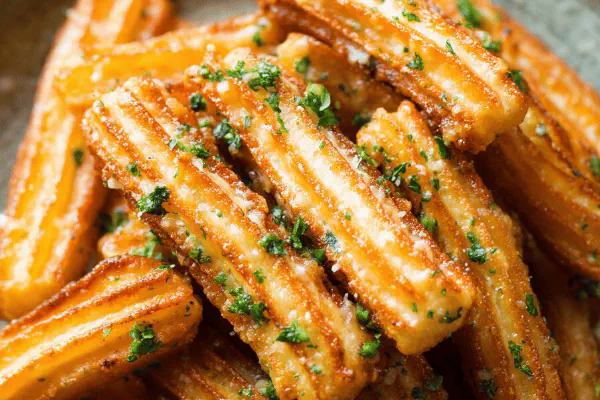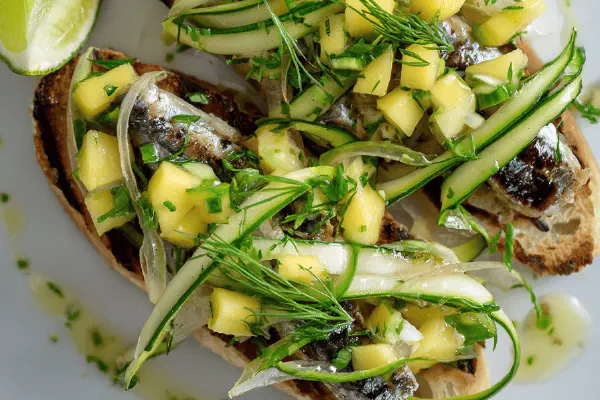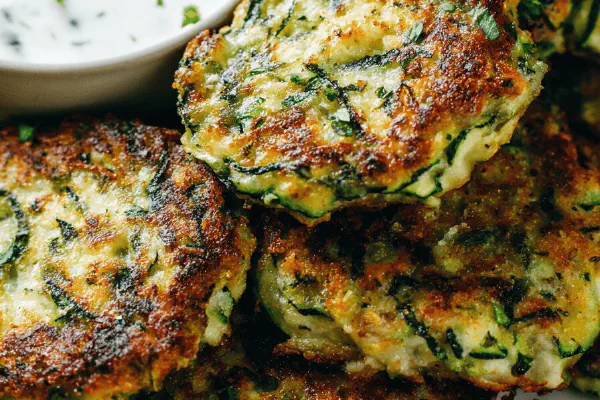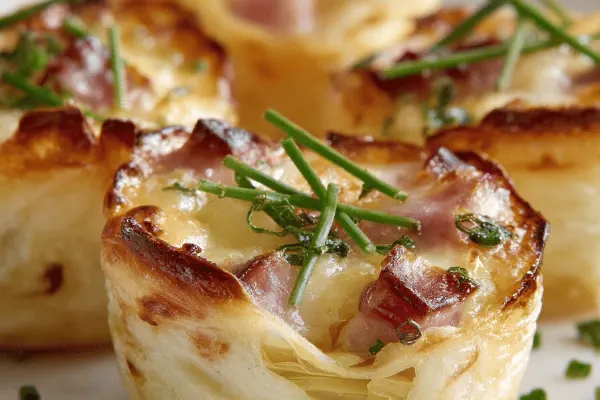Savory Cabbage Pancakes
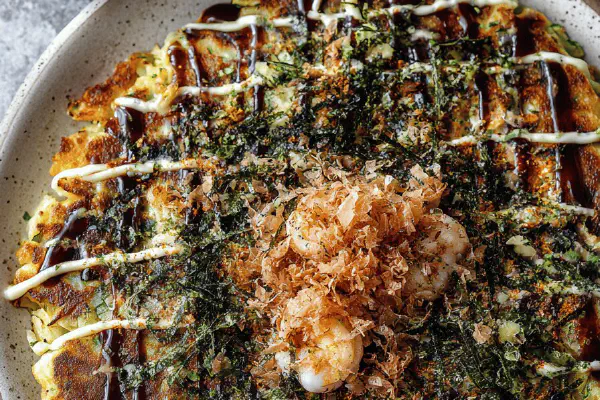
By Emma
Certified Culinary Professional
Ingredients
- 2 large eggs
- 50 ml (3½ tbsp) unbleached all-purpose flour
- 5 ml (1 tsp) tamari soy sauce
- 1 scallion, finely sliced
- 230 ml (just under 1 cup) finely shredded green cabbage
- 1 small shallot, minced
- 55 g (2 oz) streaky bacon, diced
- 25 ml (1½ tbsp) canola oil
- 6 medium shrimp, peeled, cut into 1 cm chunks
- 2.5 ml (½ tsp) powdered dried seaweed or finely chopped nori flakes
- Japanese or regular mayonnaise, to taste
- Tonkatsu sauce, for drizzling
- Bonito flakes, to finish
About the ingredients
Method
- Whisk eggs lightly in a bowl; stir in flour and tamari until just mixed with no lumps. Fold in sliced scallion last to keep freshness intact.
- Heat half the oil in nonstick pan over medium heat. Toss in cabbage, shallot, and bacon bits. Sauté until cabbage softens and translucency appears; about 6 minutes—not browned, but losing crunch. Then add shrimp chunks. Cook 90 seconds, till shrimp turn opaque but not rubbery. Remove from heat and drain any excess fat if crazy greasy. Fold this mix into egg batter gently.
- Wipe pan clean. Medium heat again, add remaining oil. Pour all batter forming 1 cm thick disk. Spread evenly but don’t fuss with edges. Cook about 3 minutes—edges golden and set, center slightly jiggly but not wet. Flip carefully; cook another 1–1½ minutes. Test done by poking center; should spring back slightly, not collapse or feel raw.
- Transfer to board; cut into wedges or squares while hot, splash wavering aromas will rise. Dust with seaweed powder liberally; drizzle mayo in thin ribbons followed by zigzags of tonkatsu sauce. Scatter bonito flakes on top; watch them dance in the residual heat.
- Eat immediately. If left too long, pancakey texture gets gummy and flakes lose their movement. Reheating? Gentle skillet warm only, no microwave.
- Substitute idea: use smoked salmon chunks instead of shrimp for smoky marine notes—drop bacon if doing this to avoid competing fats. For spicy kick, mix 1 tsp grated ginger or a pinch of shichimi pepper into batter.
Cooking tips
Chef's notes
- 💡 Start eggs whisked just lightly. Too much no good—gluten builds chewy choke. Fold scallions last. Keeps brightness crisp; prevents soggy batter.
- 💡 Oil split trick helps texture. First render bacon fat with cabbage and shallot on medium low. Slow softening, not browning. Adds fat, flavor. Then wipe pan clean; fresh oil for batter fry. Pancake bakes neat, gold crust forms evenly.
- 💡 Shrimp size matters for texture. Medium recommended. Larger means longer cook, risk rubber shell. Add last to veggies, 90 seconds tops. Opaque is done; avoid gray or dry edges.
- 💡 Thickness critical. About 1 cm if thinner edges burn before center sets. Spill batter uneven and edges crisp hard. Too thick leaves raw inside. Watch center jiggle for doneness signal; firm but springy.
- 💡 Seaweed powder or nori flakes dust after slicing. Adds mineral freshness. If none, skip or finely chop sheets. Mayo drizzle—Japanese mayo best, sweet tang cuts bacon fat. Tonkatsu sauce glossy zigzags, smoky punch. Bonito flakes finish heat dance—watch them twitch.
Common questions
How to tell when pancakes are done?
Edges golden and set, not black. Center jiggle but not wet or raw. Poke for bounce. Bonito flakes twitch if heat right. Smell sweet cabbage fat, shrimp scent. No exact time—eye and nose guide.
Can I replace shrimp?
Yes, smoked salmon chunks swap well. Drop bacon if salmon in. Fat overload otherwise. Crab meat works too; leftovers of cooked seafood. Flavor shakes up, adjust ginger or shichimi if spicy needed.
Pancakes turned gummy after reheating, why?
Reheat only skillet low heat, no microwave. Microwave heats uneven, makes coating soggy gummy. Pancake starches and egg react badly to nukes. Heat gently restores crisp.
Best oil alternatives?
Canola preferred for neutral flavor and high smoke point. Olive oil talks too much under heat, burns. Sesame oil half mix can add smoky note. Avoid butter or low smoke fats or risk smoke and bitter flavor.
